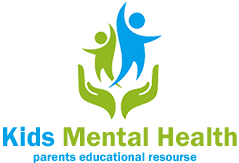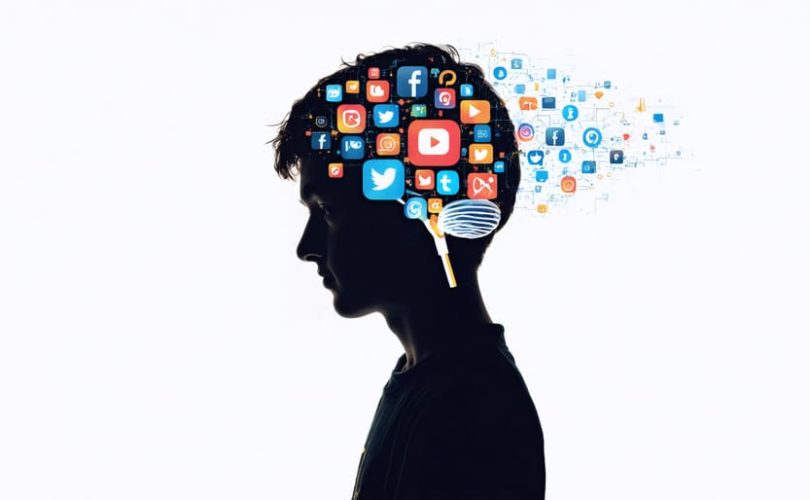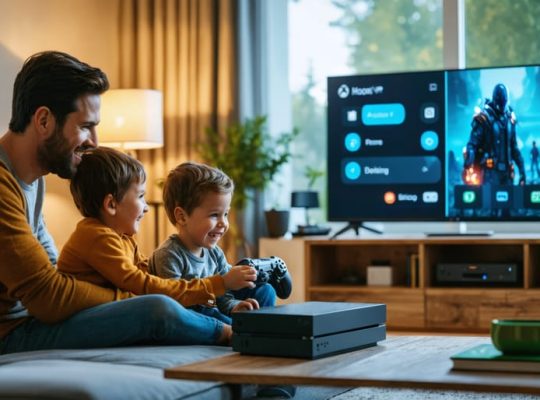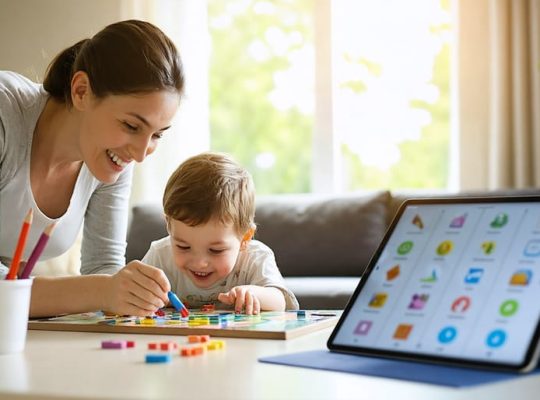In today’s hyper-connected world, the relationship between social media and youth mental health has become increasingly complex and concerning. Recent studies reveal that teenagers spending more than three hours daily on social media platforms face a significantly higher risk of anxiety, depression, and social isolation. The impact of excessive screen time extends beyond mere digital distraction, fundamentally reshaping how young people develop their self-identity, form relationships, and navigate emotional challenges.
As parents and educators witness this digital transformation, understanding its implications has never been more crucial. While social media offers unprecedented opportunities for connection and creative expression, it also introduces unique pressures: the constant comparison with carefully curated lives, the anxiety of maintaining an online presence, and the challenge of finding authentic connections in a virtual world.
This reality presents us with an urgent question: How can we help our youth harness the benefits of social media while protecting their mental well-being? Through evidence-based research and expert insights, we’ll explore this delicate balance, offering practical strategies for families navigating the digital landscape together.
How Social Media Shapes Young Minds
The Dopamine Loop
Social media platforms are designed to create powerful feedback loops that keep users, especially young people, coming back for more. When a teen receives likes, comments, or shares, their brain releases dopamine – often called the “feel-good” chemical. This creates a reward system similar to what happens when we eat delicious food or receive a warm hug.
Dr. Sarah Chen, a child psychiatrist, explains: “Each notification acts like a tiny reward, making young people anticipate and crave the next one. This creates a cycle where they check their phones more frequently, hoping to experience that pleasant sensation again.”
Parents should be aware of the warning signs of social media addiction, as this dopamine loop can lead to compulsive checking behaviors. When likes or comments don’t come as expected, young people might experience anxiety or low mood, pushing them to post more frequently or at all hours to maintain that dopamine boost.
Understanding this mechanism helps explain why it’s so challenging for teens to regulate their social media use independently. It’s not about willpower – it’s about brain chemistry.
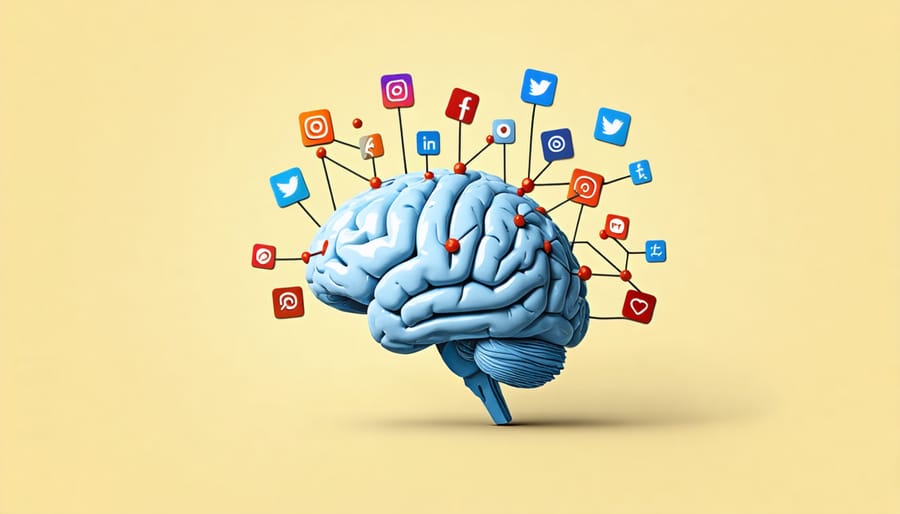
Digital Self-Image
Today’s youth are increasingly crafting their identities in two interconnected worlds – the physical and the digital. Social media platforms have become virtual mirrors where young people not only see their reflection but actively shape how others perceive them. This digital self-image can significantly impact their developing sense of identity and self-worth.
Many teenagers and young adults report feeling pressure to present a “perfect” online persona, carefully curating their posts, photos, and stories to match perceived social expectations. This constant self-presentation can create a gap between their authentic selves and their digital image, leading to feelings of inadequacy and anxiety.
The validation-seeking behavior through likes, comments, and followers can become a primary source of self-esteem for young people. When their posts don’t receive the expected engagement, it can trigger feelings of rejection and unworthiness. As one teen counselor notes, “Many of my clients measure their social worth through their social media metrics.”
Parents and educators can help by encouraging authentic self-expression, fostering offline connections, and helping young people understand that social media presents a filtered version of reality, not the complete picture of someone’s life or worth.
Key Mental Health Concerns
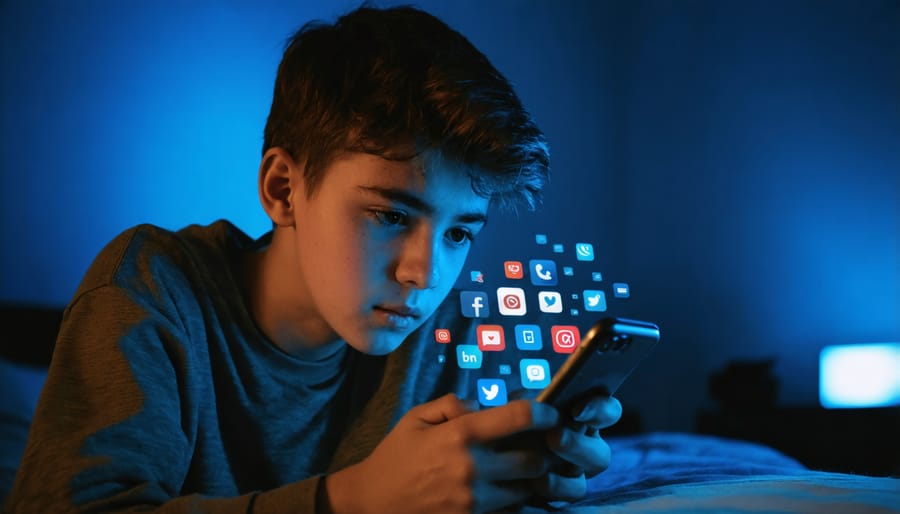
Anxiety and Depression
Social media’s constant stream of carefully curated posts, likes, and comments can significantly impact young people’s emotional well-being. Dr. Sarah Thompson, a child psychiatrist, notes that teenagers who spend more than three hours daily on social platforms show increased symptoms of anxiety and depression.
The pressure to maintain a perfect online image while constantly comparing oneself to others can create a cycle of negative self-talk and decreased self-worth. Many teens report feeling anxious about their social media presence, with concerns ranging from fear of missing out (FOMO) to worry about receiving enough likes or comments on their posts.
Research from the University of Michigan shows that the more time adolescents spend on social media, the more likely they are to experience symptoms of depression. This correlation is particularly strong among young girls who frequently engage with image-focused platforms.
“I noticed my daughter becoming increasingly withdrawn and anxious about her appearance after spending hours on Instagram,” shares Monica, a mother of a 14-year-old. “We worked together on managing social media anxiety by setting healthy boundaries and focusing on real-world connections.”
The good news is that awareness of these challenges allows parents and educators to take proactive steps in supporting youth mental health while helping them develop a balanced relationship with social media.
FOMO and Social Comparison
Social media creates a constant stream of carefully curated highlights from others’ lives, leading young people to experience two significant psychological challenges: FOMO (Fear of Missing Out) and heightened social comparison.
When teens scroll through their feeds and see peers attending parties, hanging out with friends, or showcasing achievements, they often feel left out or believe their own lives don’t measure up. This FOMO can trigger feelings of anxiety, inadequacy, and loneliness, even when they’re actually leading fulfilling lives themselves.
Dr. Sarah Martinez, a child psychologist, explains: “Teenagers are naturally sensitive to social inclusion. When they constantly see what others are doing without them, it can feel like everyone else is living a more exciting life, even though these posts only show carefully selected moments.”
The impact of social comparison is equally concerning. Young people frequently measure their appearance, achievements, and lifestyle against the filtered, edited versions of reality they see online. This can lead to decreased self-esteem and body image issues, particularly when they encounter influencers and peers who present seemingly perfect lives.
Parents can help by encouraging open discussions about social media’s highlight reel nature and helping teens develop a healthier perspective on their own lives. Setting boundaries around social media use and promoting real-world connections can also help minimize these negative effects.
Cyberbullying and Online Harassment
Cyberbullying has emerged as one of the most concerning aspects of social media use among young people. Unlike traditional bullying, online harassment follows teens into their homes through their devices, creating a sense of inescapable torment. As Sarah, a high school counselor, shares, “Many students tell me they feel they can never truly get away from the cruel comments and gossip, even when they’re in their own bedrooms.”
Research shows that victims of cyberbullying are at significantly higher risk of developing anxiety, depression, and low self-esteem. The public nature of online platforms can amplify the emotional impact, as harmful content can spread rapidly and remain visible for extended periods. Dr. Michael Chen, a child psychiatrist, notes that “the permanence of digital content can make young people feel powerless and haunted by past incidents.”
What makes cyberbullying particularly challenging is its various forms – from direct harassment and hate messages to exclusion from online groups, spreading rumors, or sharing embarrassing photos without consent. The anonymity afforded by social media platforms can embolden bullies while making victims feel even more vulnerable and isolated.
Parents and educators should watch for warning signs such as sudden social withdrawal, anxiety about checking devices, or refusing to attend school. Creating open communication channels where young people feel safe discussing their online experiences is crucial for early intervention and support.
Protective Strategies for Parents
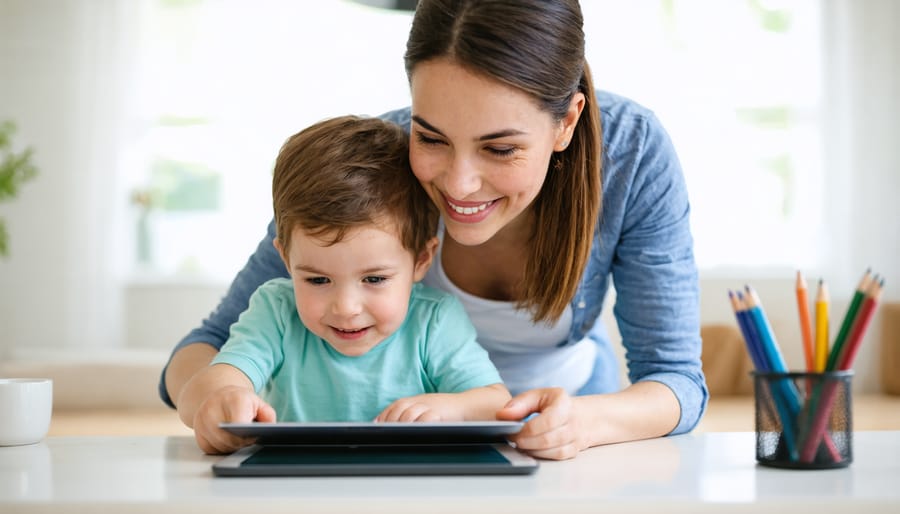
Setting Healthy Boundaries
Setting healthy boundaries around social media use is crucial for protecting your child’s mental well-being. Start by establishing clear screen-time limits that work for your family’s schedule and values. Many parents find success with the “tech-free zones” approach – designating specific areas like bedrooms and dining spaces as phone-free, promoting better sleep habits and meaningful family interactions.
Consider implementing a family media agreement that outlines when and how social media can be used. This might include rules like “no phones during homework time” or “social media apps off by 9 PM.” Remember to lead by example – children are more likely to respect these boundaries when they see parents following them too.
Content monitoring is equally important as time management. Help your children curate their social media feeds by following positive accounts that align with their interests and values. Encourage them to unfollow or mute accounts that make them feel anxious, inadequate, or unhappy. Many families have found success with digital detox strategies that include periodic breaks from social media.
Create alternative activities that promote real-world connections and positive mental health. This could include family game nights, outdoor activities, or creative projects. The goal isn’t to completely eliminate social media but to foster a balanced relationship with technology.
Most importantly, maintain open communication with your children about their social media experiences. Regular check-ins about what they’re seeing and feeling online can help you adjust boundaries as needed and address concerns before they become serious issues.
Building Digital Resilience
Building digital resilience in today’s youth requires a proactive approach from parents, educators, and caregivers. Just as we teach children to navigate the physical world safely, we must equip them with tools to handle the challenges of their digital lives.
Start by establishing open communication about social media experiences. Create a judgment-free environment where children feel comfortable sharing their concerns, whether it’s about cyberbullying, FOMO, or pressure to maintain a perfect online image. Dr. Sarah Chen, a child psychologist, suggests: “Regular check-ins about digital experiences should be as normal as asking about their school day.”
Teach critical thinking skills specific to social media consumption. Help young people understand that posts often represent carefully curated highlights rather than reality. Encourage them to question what they see and develop healthy skepticism about online content.
Practical strategies for building resilience include:
– Setting boundaries around usage time and creating tech-free zones
– Following positive, diverse, and age-appropriate content
– Learning to use privacy settings and blocking tools effectively
– Practicing digital detox periods together as a family
– Developing offline hobbies and maintaining in-person relationships
Help children identify their emotional triggers on social media and develop coping mechanisms. This might include deep breathing exercises, taking breaks when feeling overwhelmed, or reaching out to trusted adults for support.
Remember that building digital resilience is an ongoing process. Celebrate small wins, like when your child recognizes manipulative content or chooses to disconnect from negative online interactions. By fostering these skills early, we help young people develop healthier relationships with social media that can serve them throughout their lives.
When to Seek Professional Help
While some level of social media-related stress is common among young people, certain signs indicate a need for professional help. As a parent or caregiver, watch for significant changes in your child’s behavior, mood, or daily routines that persist for two weeks or longer.
Key warning signs include:
– Withdrawal from family and in-person friendships
– Significant changes in sleeping patterns (sleeping too much or too little)
– Loss of interest in previously enjoyed activities
– Extreme anxiety when unable to access social media
– Expressing feelings of worthlessness or persistent low self-esteem
– Declining academic performance
– Signs of depression, such as persistent sadness or irritability
– Obsessive checking of social media likes and comments
– Sudden changes in eating habits
– Expressing thoughts of self-harm or hopelessness
Dr. Sarah Chen, a child psychiatrist, notes: “When social media use begins to significantly impact a young person’s daily functioning or emotional well-being, it’s time to seek professional guidance. Early intervention often leads to better outcomes.”
Consider reaching out to:
– Your child’s primary care physician
– A licensed mental health professional specializing in youth
– School counselors or psychologists
– Child and adolescent psychiatrists
– Support groups for teens and families
Remember, seeking help isn’t a sign of failure – it’s a proactive step toward supporting your child’s mental health. Many young people have successfully navigated social media-related challenges with professional support, developing healthier digital habits and stronger coping skills.
As we’ve explored throughout this article, social media’s influence on youth mental health is complex and significant. While these platforms offer opportunities for connection and self-expression, they also present challenges that require our attention and proactive involvement. The key is not to fear or completely restrict social media use, but rather to foster a balanced, healthy relationship with digital platforms.
Parents, educators, and caregivers play a crucial role in guiding young people through their digital journey. By staying involved, maintaining open communication, and modeling healthy tech habits, we can help protect our children’s mental well-being while allowing them to benefit from the positive aspects of social media.
Remember that every child is unique, and what works for one may not work for another. Stay attuned to changes in behavior, mood, or social patterns that might signal digital distress. Most importantly, create a supportive environment where young people feel comfortable discussing their online experiences and concerns.
By working together and staying informed, we can help our youth develop the digital literacy and emotional resilience they need to thrive in today’s connected world.
